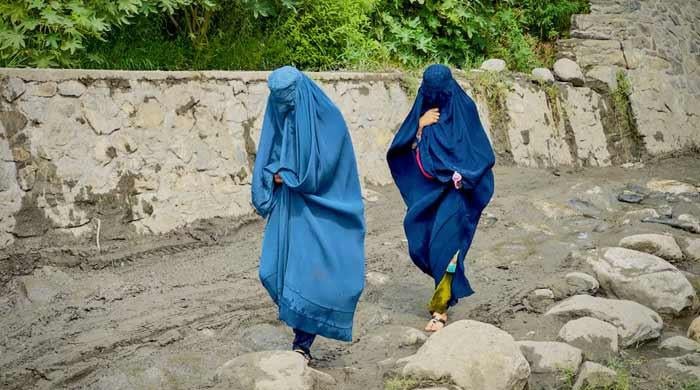Brazilian scientists witness humpbacks' comeback decades after mass killings
Scientists report dramatic increase in whale numbers off Brazilian coast, returning to their original breeding grounds
July 29, 2023

Brazilian scientists witnessed the comeback of humpback whales, decades after they were killed en masse for their blubber, and they could not more magical than they already are.
Julio Cardoso, a Brazilian scientist, recently captured a humpback whale's tail on Brazil's southeastern coast, while collecting data on marine mammals' numbers.
He helps researchers track the increasing number of humpbacks in the area, using citizen scientists like Cardoso to monitor their populations.
Julio Cardoso leans over the side of a boat to photograph a humpback whale as it slaps its giant tail into the water off Brazil's southeastern coast.
Like other citizen scientists, as they are known, Cardoso uses the photographs to collect information on the numbers of marine mammals, helping researchers and scientists track the surging numbers of humpbacks in the area, Reuters reported.
"It's a group of people, volunteers, we work on board and on different boats and we have people looking from land, so we've got very good information about the presence of humpback whales here," said Cardoso, a retiree who set up the whale spotting project, known as Baleia a Vista, in 2015.
There has been a dramatic increase in the number of whales off Ilha Bela's coast in recent years, and many now return to their original breeding grounds all along the Brazilian coast where they used to be killed en masse for their blubber, says scientist Jose Truda Palazzo.
"These animals survived whaling with a very, very small population remaining... something between 300 to 500 animals," Palazzo, of the Humpback Whale Institute in the state of Bahia, said.
Palazzo says that after legal protections were put in place in the 1980s, the number of whales — which only produce one calf every two to three years — started to increase.

In their last census in 2022, 30,000 of the animals were registered in Brazil's waters.
Palazzo says the work of the self-funded citizen scientist volunteers is "extremely helpful" in the task of tracking the animals, as a lot of conservation projects are underfunded and lack resources.
Cardoso and his team photograph the whales' tales, which is the best way to identify them as, like human fingerprints, no two tails are identical.
They upload the photos onto the HappyWhale website, a global whale-watching platform that uses image processing algorithms to match whale photos with scientific collections.
"Photo ID can give you insights into the life history of individuals, but also allows you to understand population dynamics better by knowing this animal's movements, how they migrate and intersect with other populations," said Palazzo.
Some of the humpbacks they have spotted in Brazil have come from or made it to Antarctica, Patagonia, the African coast and there was one that made it all the way from Australia.
Palazzo says the surge of whales in Ilha Bela is great news for marine conservation, not only in Brazil but worldwide.
"It shows that if we can do effective protection for marine species, most of them will recover," he said.









